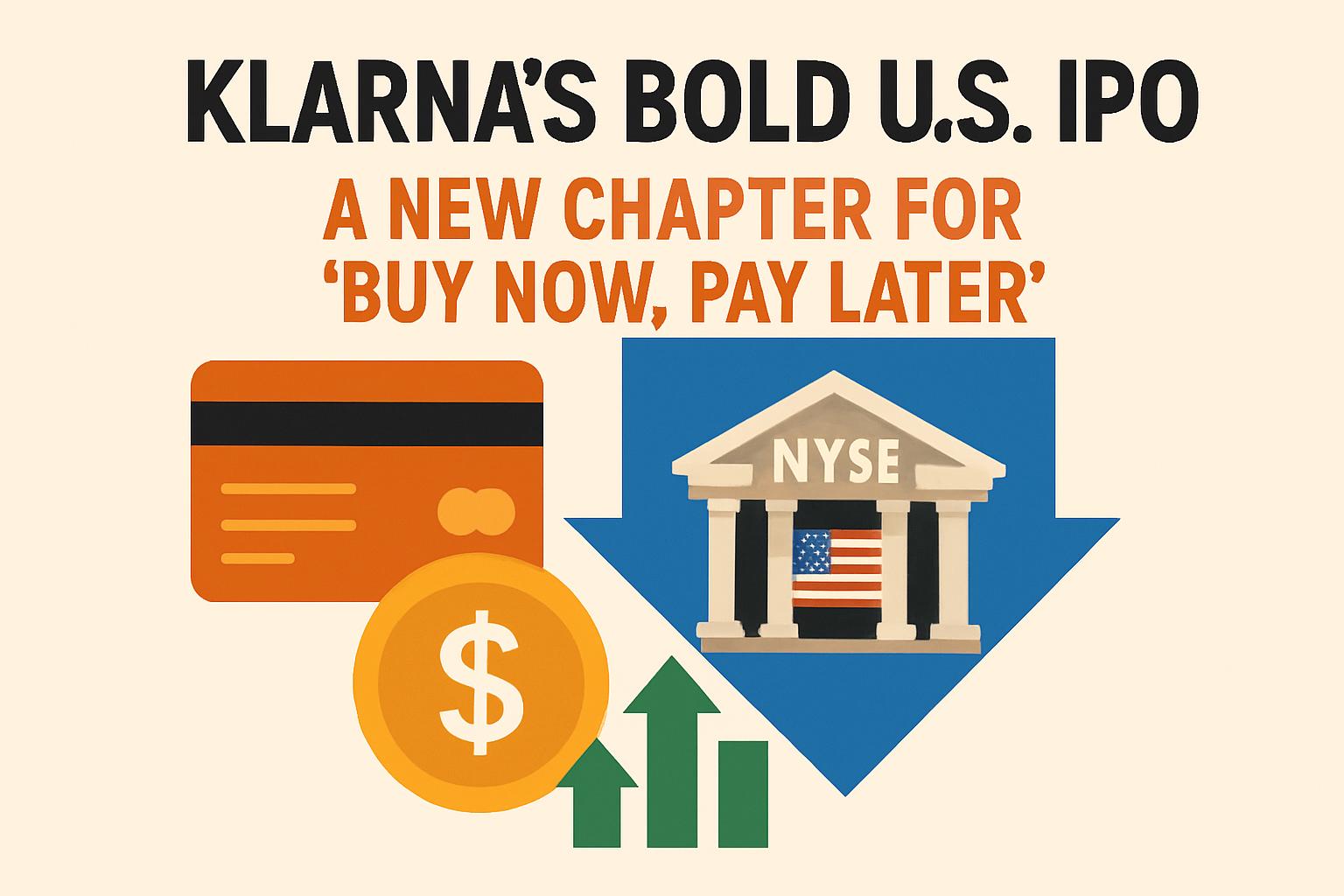The autumn of 2025 marks a pivotal moment for Sweden’s payment giant Klarna, as the company reemerges on the IPO scene with a dazzling debut on the New York Stock Exchange. Raising a staggering $1.37 billion, Klarna’s offering wasn’t just a routine financial maneuver—it was a statement of intent.
Overcoming Setbacks with a Triumphant Return
Earlier in 2025, Klarna confronted significant losses, nearly $99 million in the first quarter, which pressured them to pause their planned U.S. IPO. Fast forward to September, Klarna reignited its IPO ambitions, pricing shares at $40 each, above their initial $35 to $37 range. This aggressive pricing strategy not only showcased the company’s regained confidence but also attracted an unprecedented 20-fold oversubscription, captivating the market’s attention.
The Numbers Behind the Hype
The offering consisted of 34.3 million shares, with Klarna itself releasing 5 million shares and existing stakeholders such as co-founder Victor Jacobsson and major investors like Sequoia Capital and Denmark’s Heartland A/S offloading 29.3 million shares. The consequent valuation of $15.1 billion signifies a robust recovery from previous lows, though it still trails the dizzying $45.6 billion peak reached in 2021, under SoftBank’s patronage.
A Revived U.S. IPO Market
Klarna’s entry manifested just as the U.S. IPO market experienced a renaissance, a backdrop shared by the likes of Gemini, supported by the Winklevoss twins, and Blackstone-backed Legence. As of this year, IPOs in the U.S. have amassed $24.4 billion, surpassing the previous year’s metrics.
Strategic Shift Towards Digital Banking
Klarna’s evolution from a ‘buy now, pay later’ entity to a digital banking powerhouse is underway. With new offerings such as debit cards and extended financing options, Klarna now facilitates long-term installment plans for high-value purchases. Although installment transactions currently account for a mere 2% of its total sales, Klarna’s merchant partnerships have doubled recently, indicating strong future growth prospects. Nevertheless, the shift necessitates higher provisions for bad debt, squeezing short-term profits. The firm’s SEC filings highlight a 2025 first-half revenue of $1.52 billion against a loss of $153 million—indicating an increase in year-over-year losses.
Strategic Collaborations and Market Presence
Underpinned by underwriters including Goldman Sachs and JP Morgan, Klarna pledges a commanding presence in the stock market under the ticker “KLAR.” As it navigates its digital transformation, Klarna is poised to reshape its positional dynamics in the competitive financial landscape.

![[News] Bitcoin at a Turning Point? 10x Research Signals a Bullish Macro Shift Ahead](https://cryptoexplores.com/wp-content/uploads/2025/06/new20250616.jpg)
![[News] Binance Lists $HOME, the Gas-Free, Bridge-Free All-in-One DeFi App](https://cryptoexplores.com/wp-content/uploads/2025/06/news20250617.jpg)